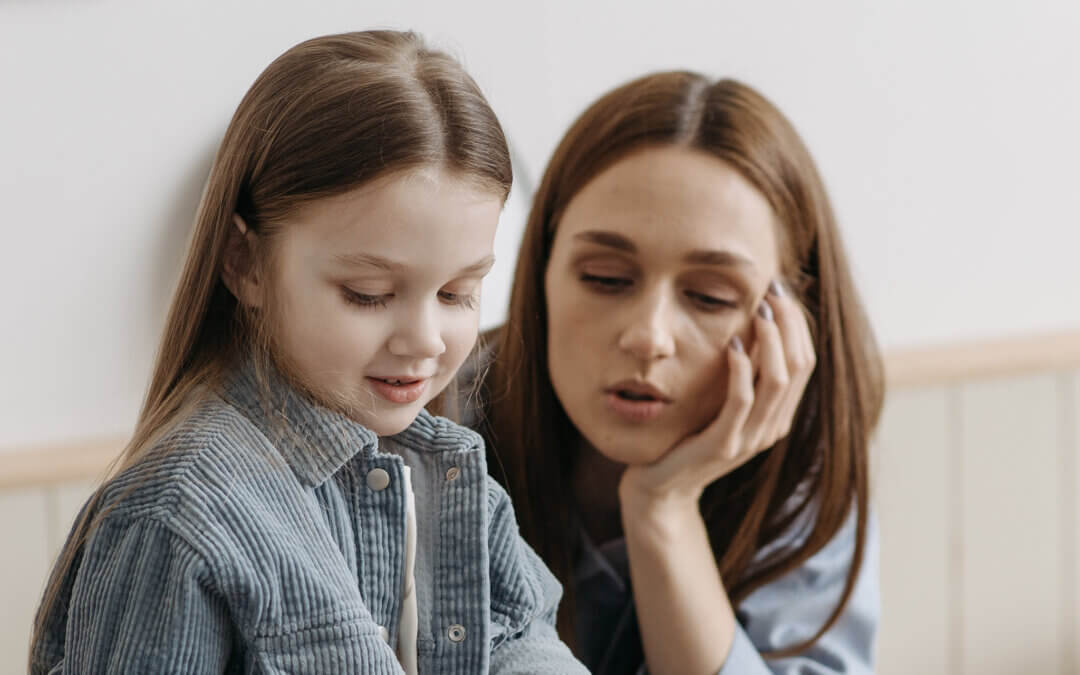It’s fall time and we are all getting back into the swing of things. Children are back in school, we get busy with fall sports, extracurricular activities, and work schedules can feel overwhelming and hectic. When our children are tired and more exposed to social interactions it can leave them feeling extra emotional. Not knowing how to regulate those emotions can make things very hard after a long day and put stress on the family system. If this resonates with you and you feel like you are not sure what to do or feel overwhelmed, you are not alone. I have worked with many in family counseling over the years who feel this burnout during the fall season. I want to guide you on talking about emotions with your children so you can increase intimacy in your relationships with them and find ways to help them regulate.
Conversations about Emotions
Knowing how to help children regulate or process their emotions begins with emotional identification. There are many helpful ways to talk about feelings with our children. It really depends on the age of the child, but it is helpful when you can meet them where they are. After school questions that could prompt good conversation, “What was your favorite part of the day?”, “What did you learn about today?”, or “How did you feel today?” These are more specific than just “How was your day?” and could lead into a conversation that will help you understand how your child is feeling.
Books and Movies to Help Facilitate
I recommend children talking openly about emotions, what they are and how they are portrayed. Having direct conversations about emotions in a safe place that is not overstimulating and making this a regular practice in the home can keep the line of communication open and build trust. Reading emotion-focused books gives younger children a better idea of what emotions look like. While reading, you can talk about when they felt that way or if they know when that emotion has happened to them. I have also found that movies that portray emotions tend to help children understand those emotions. Pixar has some really good movies that show emotions and what emotional dysregulation looks like. Watching these can help your child feel less alone in their big emotions. Inside Out, Inside Out 2, Elemental, Coco, and Turning Red are some examples of good movies that show emotions.
Normalize and CoRegulate
When our children are struggling it can be our first instinct to want to find the quickest fix. Try to allow space for your child to feel these emotions. You can offer a quiet and safe space for them that does not include siblings or other distractions. When struggling with knowing their own emotions, or feeling those emotions or emotional dysregulation, the best thing to do is help them not feel alone in that. Those conversations can look like telling them that you also have emotions and sometimes struggle to regulate. It can also look like telling them that any emotion is okay to have as long as we are keeping others and ourselves safe. I think the most helpful thing is to regulate together. I always treat emotional regulation tools like exercising, the more you do it the more natural it will become. Pick a breathing tool that is most helpful for both you and your child. Below this article are a few examples of breathing exercises that might be helpful. I challenge you to pick one and practice it together with your children.
Remember, emotions are sometimes difficult for children to express through verbal communication. Try to meet your children where they are in helping them express and feel their emotions. Building a relationship where you can coregulate together can build more intimacy in your relationship and help your children feel safe.
Boxed Breathing
To begin, draw a box on a piece of paper for both you and your child. Then, trace with your finger on each side of the box, breathing in through your nose on one side and then breathing out through your mouth on the next, repeating this pattern as you trace the box.
Bubble Breathing
Pretend that you and your child are blowing bubbles, take a nice deep breath in and then blow out slowly concentrated in one area like you are blowing a bunch of bubbles. Sometimes to begin I use actual bubble wands, this also makes it more fun.
Soup Breathing
Each of you pretend to hold a bowl of soup in your hands. Take a deep breath in and then slowly blow it out on the soup, like you are trying to cool the soup. For this exercise you could also use their favorite hot food to make it more engaging for your child.
Five Finger Breathing (Turkey Breathing)
In this exercise you and your child hold out your hand and spread your fingers apart. Trace around the hand starting at your thumb and go up (this is when you and your child will breathe in). Then go down your thumb (this is when you breathe out). You then continue together up and down your fingers, breathing in and out until you reach the end of your pinky finger. Repeat as many times as needed.

